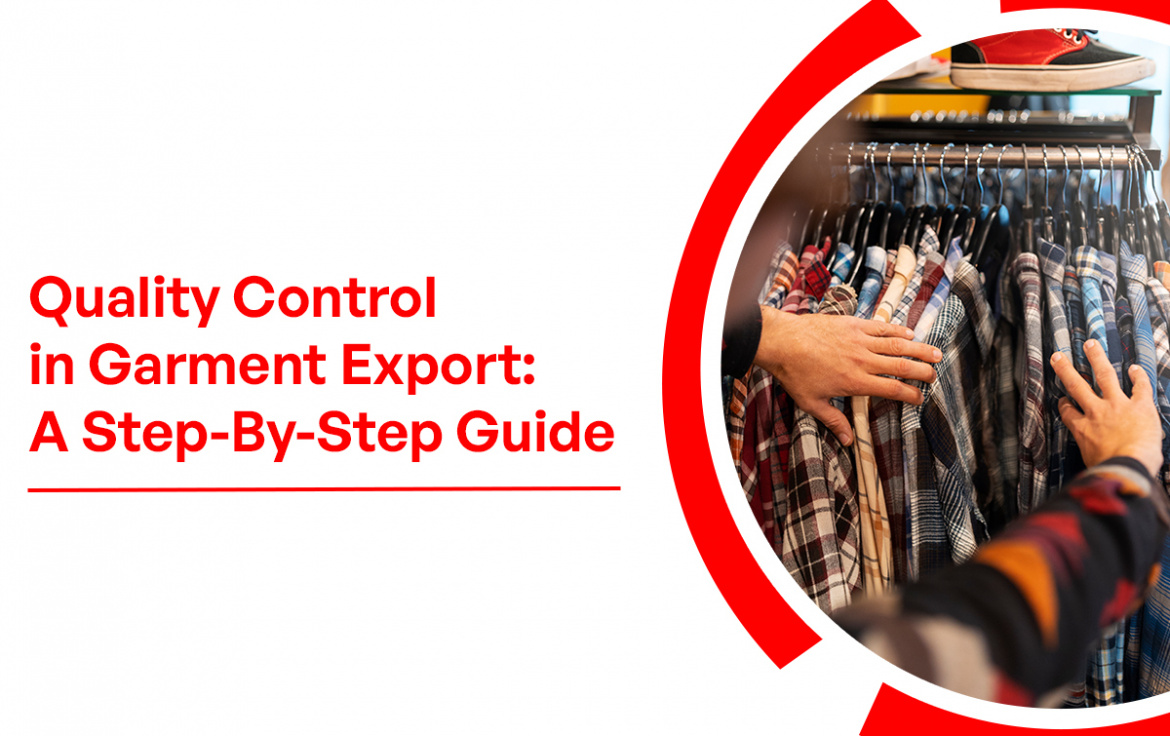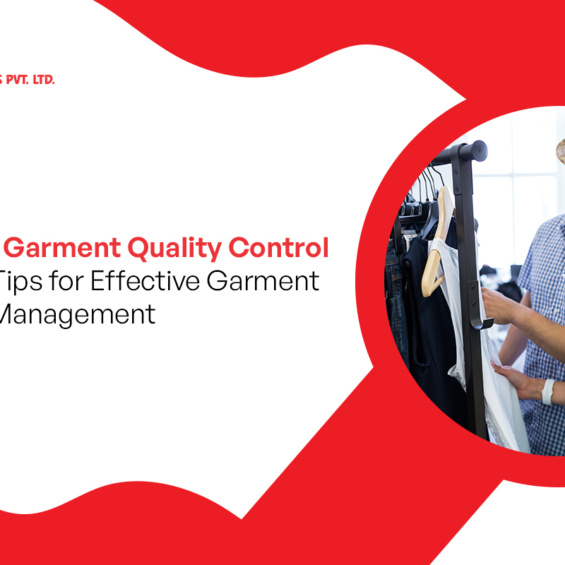Quality Control in Garment Export: A Step-By-Step Guide
In the fast-paced and fiercely competitive fashion industry, ensuring the potential of goods is a must. The fundamental element that ties the entire process together is quality control in garment export, which allows the apparel delivered to global markets to satisfy the highest standards.
In this blog, we will explore the basics of quality control, the significant steps, and the inspection stages involved to ensure quality control in garment export that will help you to make your brand’s reputation stronger.
Understanding the Quality Control in Garment Export
Quality control in garment export is an intensive procedure that supports the fashion industry’s overall performance. It guarantees that garment entering manufacturing facilities fulfills the desired standards in terms of design, durability, and regulatory compliance. Quality control is a systematic strategy that includes everything from setting quality standards to inspections and testing.
Garment export houses and manufacturers can uncover mistakes and discrepancies by completing rigorous quality checks, enabling corrective actions and improvements. This proactive approach protects a brand’s reputation while increasing customer satisfaction and commitment.
7 Key Steps Involved in Quality Control of Garment Export
Establishing quality standards for garment exports is a vital step in ensuring that the final products match predetermined design, durability, and safety criteria. Let’s explore the seven key steps included in the quality check process.
1. Identify Regulatory Criteria
Begin by recognizing and comprehending the local and international regulations that govern garment export house, which includes quality criteria, labeling requirements, and safety standards.
2. Establish Internal Quality Standards
Create internal quality standards for your items. This includes specifying fabric quality, stitching, design, sizing, colourfastness, and other parameters. These guidelines should be consistent with industry best practices and customer expectations.
3. Consult Industry Standards
Use industry-specific norms and standards developed by organisations like the International Organisation for Standardisation or the American Association of Textile Chemists and Colourists. These standards provide extensive quality benchmarks.
4. Collaborate with Suppliers
Communicate your quality requirements to suppliers, such as fabric and garment manufacturers. Work with them to ensure your specifications are understood and followed throughout the manufacturing process.
5. Create Testing Protocols
Create testing protocols for different quality parameters by performing fabric strength testing, colour fastness tests, dimensional stability studies, and other tests. Determine the frequency of testing and the requirements for each product.
6. Certifications and Audits
Acquire required certifications and undergo frequent audits to prove compliance with quality standards, depending on the market and industry. Consider common certifications like ISO 9000 series, Global Organic Textile Standard, and OEKO-TEX.
7. Customer Feedback Integration
Consider customer feedback to discover any reoccurring quality issues. This data-driven strategy aids in making data-driven quality improvement decisions.
Inspection and Testing for Quality Control in Garment Export
Inspection and testing procedures ensure that every garment that leaves the manufacturing facility fulfills the predetermined quality criteria. Let’s navigate the testing stages involved to ensure high-quality garments.
1. Prior Production Inspection
Before garment assembly, this stage comprises inspecting the quality of materials and components. It includes checking fabrics, trimmings, zippers, buttons, and threads for flaws, colour consistency, and conformity to quality requirements.
2. During Production Inspection
This stage focuses on stitching quality, seam strength, alignment, and label and accessory attachment. Inspectors evaluate partially assembled clothes as production continues.
3. Final Testing
Through testing of measurements, color consistency, design accuracy, and any faults in stitching, embroidery, or printing for overall quality during the final inspection.
4. Quality Parameter Testing
Testing takes place on garments to ensure colorfastness, dimensional stability, fabric strength, and other qualities. These tests verify that the garment will not deteriorate due to wear, laundering, or other circumstances.
5. Size and Fit Analyzation
Sizing and fit inspections ensure that clothing that corresponds to the size charts supplied to the fabric will give the comfort and fit that customers anticipate.
6. Compliance With Labeling
Inspectors ensure labels, instructions, and other regulatory information are appropriately attached to each garment to meet labeling regulations while ensuring customer safety and satisfaction.
7. Unexpected Sampling
A statistical technique of incorporating random sampling since it is not possible to evaluate every garment individually. Garment sampling enables a fair evaluation of the entire manufacturing batch.
8. Reporting and Documentation
All inspection and testing procedures, including results and flaws, are meticulously documented. Inspection reports aid in tracking product quality and finding areas for improvement.
9. Remedial Actions
Reworking, repairing, or even rejecting inferior clothing are remedial actions if flaws or non-compliance issues arise.
Also Read : Quality Assurance in Apparel Sourcing: From Samples to Final Products
Upholding Quality Standards In Garment Exports With Saraogi Super Sales
Quality control is critical in garment export as it ensures uniformity, quality, and strict adherence to set standards, requirements, and regulations. The vast distances between production facilities and end purchasers present a significant task, making pre-shipping quality control a crucial undertaking.
With meticulous garment quality control, you can protect your brand’s reputation. Contact Saraogi Super Sales to begin optimizing your garment quality assurance process promptly.
Frequently asked Questions:
What is the quality control in the garment industry?
What is QA and QC in textile?
What is a QC checklist in garment export?
What is the importance of quality Control in garment exports?
What are the 5 responsibilities of quality control?
Inspecting: Checking products or processes to ensure they meet set standards.
Testing: Assessing product performance through various evaluations.
Documentation: Recording and maintaining data on quality standards and assessments.
Problem-solving: Identifying and resolving quality issues promptly.
Continuous Improvement: Implementing strategies to enhance quality over time
Specializing in sourcing and exporting
a wide range of garments and apparel







